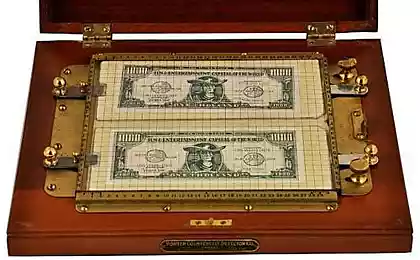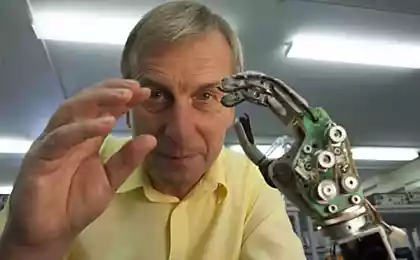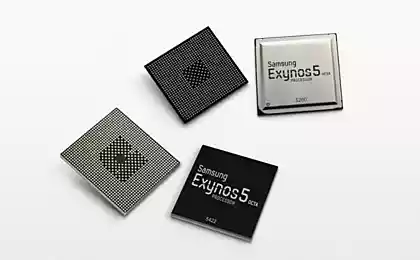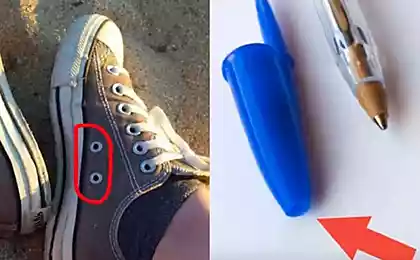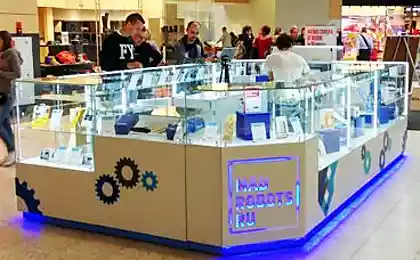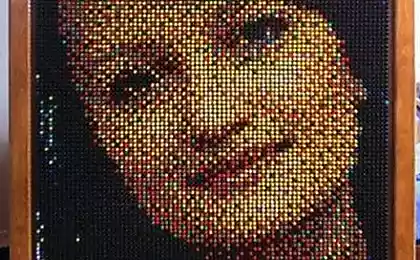1083
As I have implanted RFID in his arm, and then another NFC. Part 1
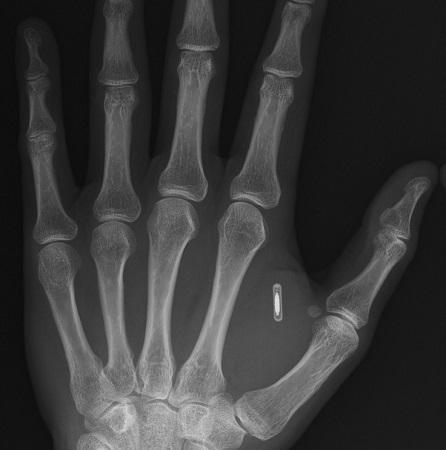
I've always liked the idea of a key that can not be forgotten. And if this key is also suitable for standard lock - well twice.
Therefore, as soon as an opportunity to place under their own skin RFID, though compatible with anything in general use, I did implanted tag EM4100 - many cheap locks and access control systems use it.
And when the label was found compatible with NFC - and the ability to be the key to laptops, smartphones, and the remaining castles - avoid embedding it firmly reasons was not.
WARNING! This publication is not an instruction, advice, guidance and is intended for reference only. Repetition of below can be fatal or lead to complications and injury. The author does not recommend the described actions on itself and is not responsible for any consequences resulting from the publication of reading. B>
RFID
RFID - Radio Frequency IDentification - wireless technology to identify users and equipment. There are a large number of very different technologies and different working frequency (868 MHz, 13, 56 MHz, 125 kHz et al.) Encoding a read-write or read-only action range, the presence of the battery, the purpose.
reader, reader - active tag reader sends regular queries in the form of electromagnetic waves into the surrounding space. Can be autonomous with its own memory and the ability to directly control, such as a lock; or transmit data via RS-485, USB, or otherwise.
tag, key tag, tag - a device containing a unique identifier, and, sometimes, a data area. May be embedded encryption code execution other features. Often does not contain batteries and is powered by EM waves emitted by the reader.
Standard EM4100
Standard contactless radio frequency identification cards of EM Microelectronic-Marin. Operate at a frequency of 125 kHz.
Have a unique 40-bit number, which is transmitted together with the overhead bytes cyclically in the clear. Encrypt and store user data, as well as the ability to record - not (officially, unofficially for a long time already have blanks cards where you can write down an arbitrary number). Obviously, for serious protection at least something not quite fit. However, it is widely used in simple access control, intercom instead of tablets Dallas, cheap controllers electromagnetic locks and such things. Keys may look like a plastic stick, flexible or rigid plastic card or otherwise.
For example, контроллер lock the keyboard and a dozen keys to him for $ 10.
Implantable tags EM4100
Basic requirements for implantable devices:
The small size that is not too stuck under the skin The streamlined shape, so as not to damage the skin from the inside bioinertness material - pure silicon, glass integrity, strength and resistance to sterilization
But it was not so bad! At the request of em4100 glass, em4102 glass, rfid glass able to find something similar on eBay and immediately ordered it. Came two sets of tags, here are (left photo - mine, right - rss-systems.de):
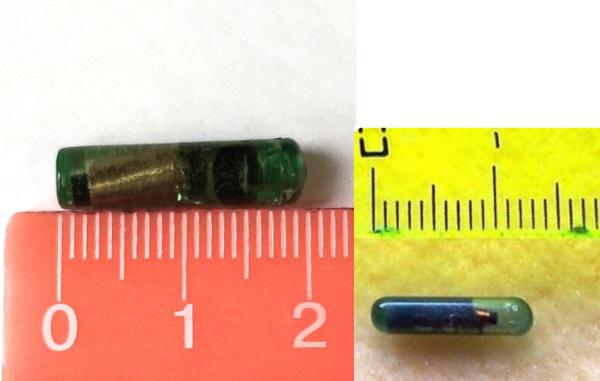
I got the first ones on the left, and upset by their size. They were bigger than in the photo, is not made of glass and not quite round shape. Fortunately for them to come and others who find themselves smooth glass capsules about 12 mm long and 3 mm in diameter. Them and it was decided to implant.
The process of implantation under the skin tags
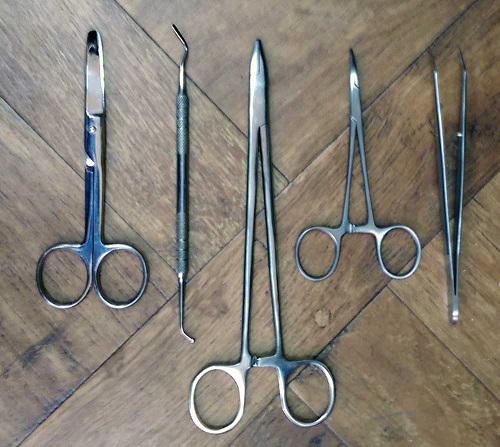
For a while, took a searching man ready to take on implantation. Basically, I was ready to do it himself, if no one there, or the trust of others, vet, but it was easier. Doctor friend (specialty - a general practitioner, but, like all doctors, of course, able to stitches, do subcutaneous anesthesia and incisions) agreed to do everything in the best possible way, and in the summer of 2013, we purchased the necessary materials (procaine, antiseptics, several medical instruments, sterile scalpels and needles and thread) and started.
That's what we did:
Sterilization labels. B> Since the label came not sterile, it was necessary from sterilized. To do this, the label has been thoroughly cleaned, and then for an hour mark was in iodine solution immediately before being placed under the skin were washed first with alcohol, then with sterile water for injection. Sterilization tools. B> scalpels, gloves, sets of needle and thread were sterile (and disposable), but the steel blade and tweezers, it is necessary to create a space in the subcutaneous tissue under the label required sterilization. Access to the autoclave was not, so I had to use a chemical method of sterilization. We used "pyurzhavel" in high concentration. This is bad for the instruments (corrodes even a stainless surgical steel), but it is available and it works. Anesthesia. B> Infiltration anesthesia novocaine - enter novocaine solution 20 mg / ml subcutaneously in the proposed location of the cut and wait for 5-10 minutes to infiltrate the surrounding tissue. Be careful with novocaine - if you have a allergy and \ or curves hands can cause a variety of the most unpleasant consequences, even death! Do not do it yourself, if you are not a doctor. B> The choice of label placement. B> Usually small objects are implanted into the space between the thumb and forefinger of the hand (approximately where there is a label on KDPV) - the least likely to cause damage when working with your hands and anything. For the same reason was chosen left hand. The incision and placement of the label. B> Skin thrice rubbed with alcohol. The incision made in the usual disposable scalpel, approximately 5 mm in length, pulling the skin beforehand. Since under the seat section at this point is already in a "bubble" of the solution of novocaine, not to be mistaken with depth is quite simple. Then dental scapula (shoulder blade width 5 mm, length 30 and the handle) separated from the skin and tissue forceps slipped his mark there. To avoid being squeezed back label must be at a distance of 1-2 cm from the cut, not back to back. Completion. B> Since the cut was small, sew it did not make sense, limited to treating the wound with hydrogen peroxide and applying sterile patch. I also took into dose broad-spectrum antibiotic to reduce the risk of inflammation, if something did not work well enough to sterilize.
Healing took place without any problems, big swollen bruises, inflammation. For three days I drank antibiotic and changed the patch, washing the cut with chlorhexidine, and then took it off. Tag palpated under the skin, do not cause some discomfort, and - most importantly - worked! B>
This is how the cut looked on the second day
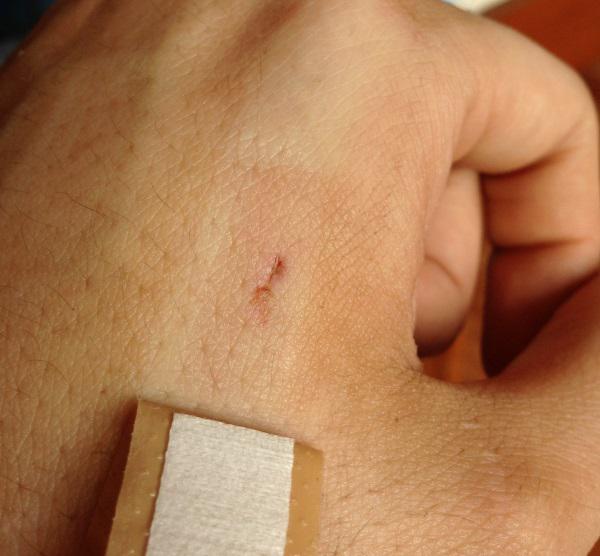
A year later, I have added to the existing label EM4100 second, NFC-compatible, which can be read at all smartphone and use as much. Talk about this in the second part of the article (if it will be of interest, of course).
As it looks now
If you do not stretch the skin specifically noted it is difficult to label:
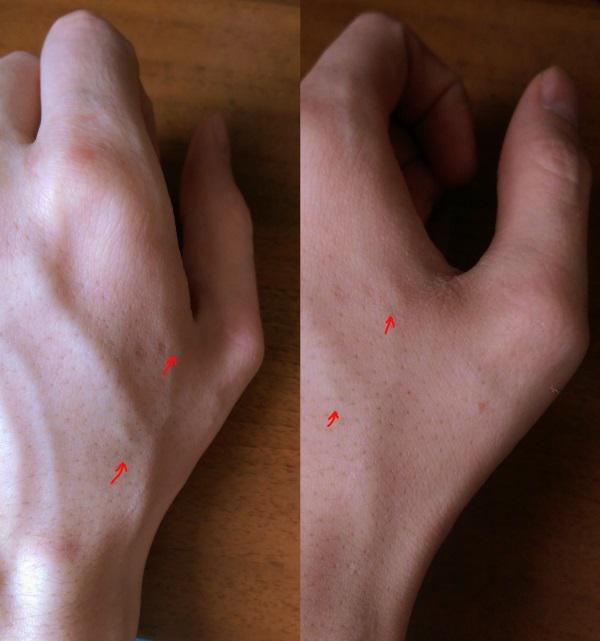
Any problems, no complications occurred, including the work of his hands, falls and other dangerous activities.
Why use?
I use this label for the same, and what he wanted - as an electronic key to his room in the office. The reliability of the standard itself is low, but, as a rule, the electromagnetic lock - no primary but only auxiliary. In our office, for example, it is used during the day and at night, when everyone is gone, the door is locked by another mechanical key and the room is armed. So it is quite enough and EM4100.
The process of opening the lock (arm to keep the back of the reader, since the range of the very small):

Access to the apartment, car, office. Easy Confirmation of any action. For serious security specifically, the label does not fit (see. Above), but less suitable NFC-compatible, about it in the second part.
Observations and remarks
Tags can not be felt, do not interfere with the work of the hand, for almost two years, it is not broke. In the metal detectors nothing squeaks. To have the key to the door is always themselves, especially from collapsing - really comfortable. Reading distance - less than a centimeter, most often it is generally to be contacted skin. Therefore, make a copy of the EM4100 is as easy as copy of the map, which is in the pocket. Normal NFC (ISO 14443) are not copied at all + cryptography inside. No, I was never worried about a unique identifier in the body. In the body, and so full of unique identifiers, even more, we carry with them in the form of equipment and documents. KDPV not mine, taken отсюда, the rights to it are those of the author. Experience in the implementation of the first label was quite successful, and after a year I decided to extend the functionality using tags NFC, including compatible smartphones and allows them to unlock.
In the second part of this article I want to talk about such labels, the possibility to unlock the phone or log on to Windows using the label, as well as about other, more simple method for implanting a syringe.
Source: geektimes.ru/post/246298/


